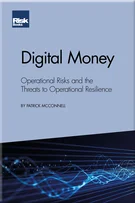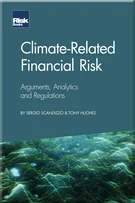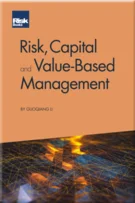Credit Spreads
Raquel Bujalance and Oliver Burnage
Credit Spreads
Introduction
Bank Capital and Liquidity
ALM in the Context of Enterprise Risk Management
The New Basel Standards on IRRBB and Their Implications for ALM
Measuring and Managing Interest Rate and Basis Risk
The Modelling of Non-Maturity Deposits
Modelling Non-Maturing Deposits with Stochastic Interest Rates and Credit Spreads
Managing Interest Rate Risk for Non-Maturity Deposits
Replication of Non-Maturing Products in a Low Interest Rate Environment
Managing Mortgage Prepayment Risk on the Balance Sheet
Considerations for ALM in Low and Negative Interest Rate Environments
Credit Spreads
Hedge Accounting
Supervisory Views on Liquidity Regulation, Supervision and Management
Measuring and Managing Liquidity and Funding Risk
Managing Reserve Assets
Instruments for Secured Funding
Asset Encumbrance
Capital Management
A Global Perspective on Stress Testing
Reverse Stress Testing: Linking Risks, Earnings, Capital and Liquidity – A Process-Orientated Framework and Its Application to Asset–Liability Management
XVAs and the Holistic Management of Financial Resources
Optimal Funding Tenors
Funds Transfer Pricing in the New Normal
Balance-Sheet Management with Regulatory Constraints
ALM risk management has traditionally focused on management of the interest rate risk, but standards for interest rate risk in the banking book (IRRBB) published in 2016 by the Basel Committee on Banking Supervision (BCBS) includes credit spread risk as another piece of the puzzle, as changes in the credit spreads could amplify the risk already arising from the IRRBB.
Incorporating the credit risk factor in the calculation of market value of equity (MVE) is often very complex and challenging. First, it is necessary to consider whether it is more appropriate to model this risk through a future cashflow estimation (assuming a probability of default and recovery) or through a credit spread. As we shall show in this chapter, this decision could affect some metrics, such as the duration of the portfolio, in different ways. Second, the challenge is to build the spread curves (or, if a probability of default (PD) and a recovery is needed, how to calibrate them), and to determine the relationship between these parameters and those used for other purposes within the bank: the credit risk area might estimate different PDs for different purposes, while the counterparty risk area might
Copyright Infopro Digital Limited. All rights reserved.
As outlined in our terms and conditions, https://www.infopro-digital.com/terms-and-conditions/subscriptions/ (point 2.4), printing is limited to a single copy.
If you would like to purchase additional rights please email info@risk.net
Copyright Infopro Digital Limited. All rights reserved.
You may share this content using our article tools. As outlined in our terms and conditions, https://www.infopro-digital.com/terms-and-conditions/subscriptions/ (clause 2.4), an Authorised User may only make one copy of the materials for their own personal use. You must also comply with the restrictions in clause 2.5.
If you would like to purchase additional rights please email info@risk.net










